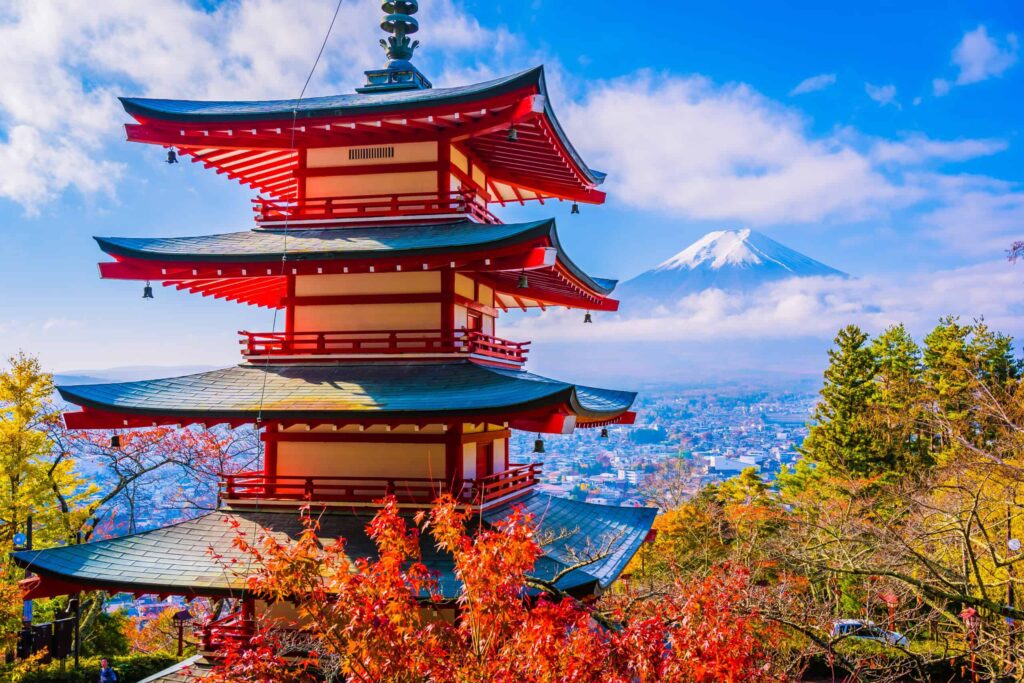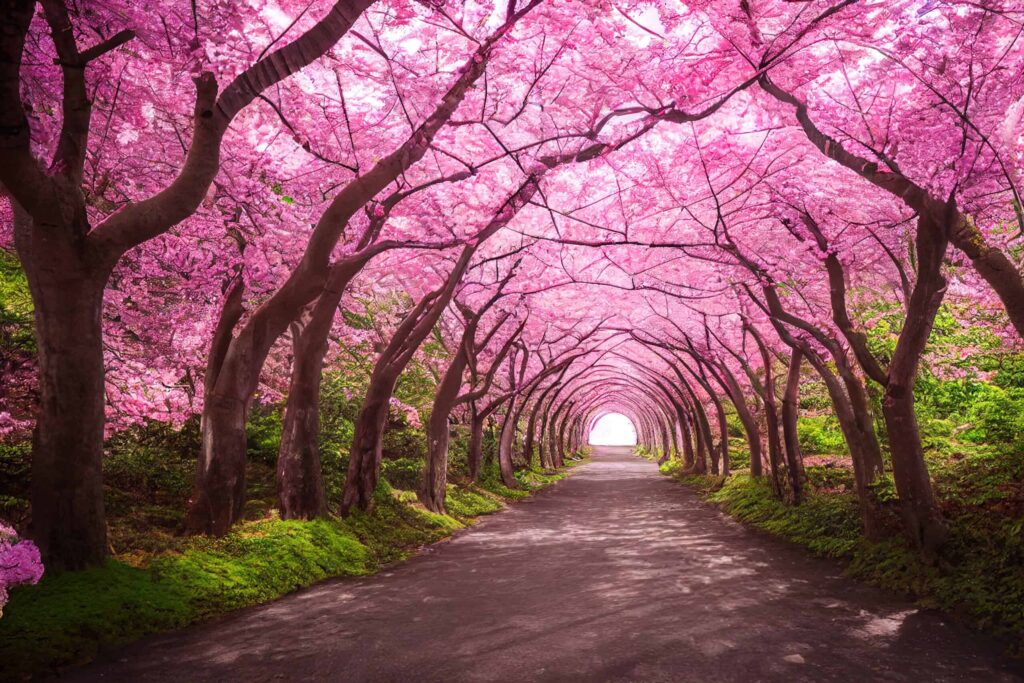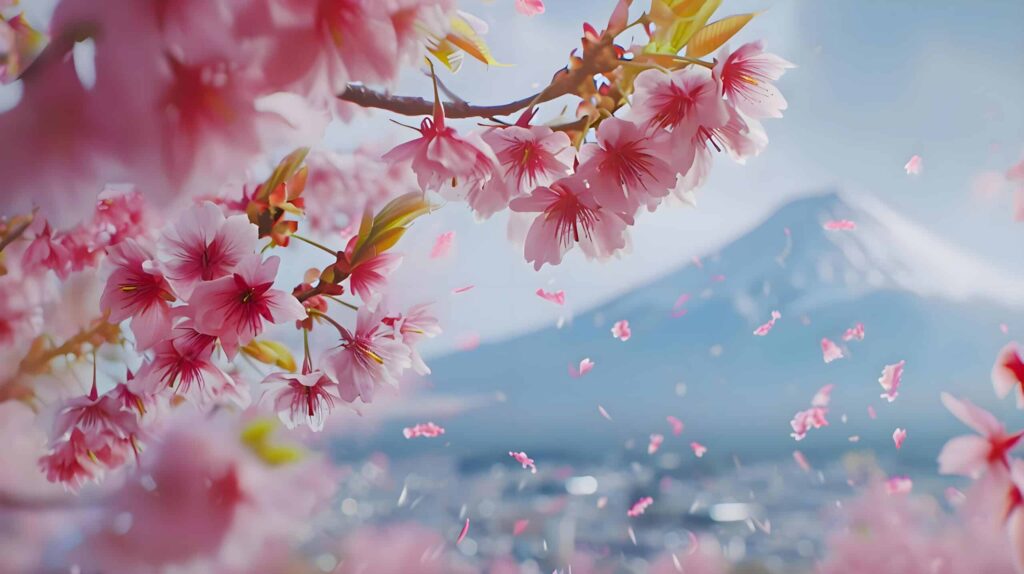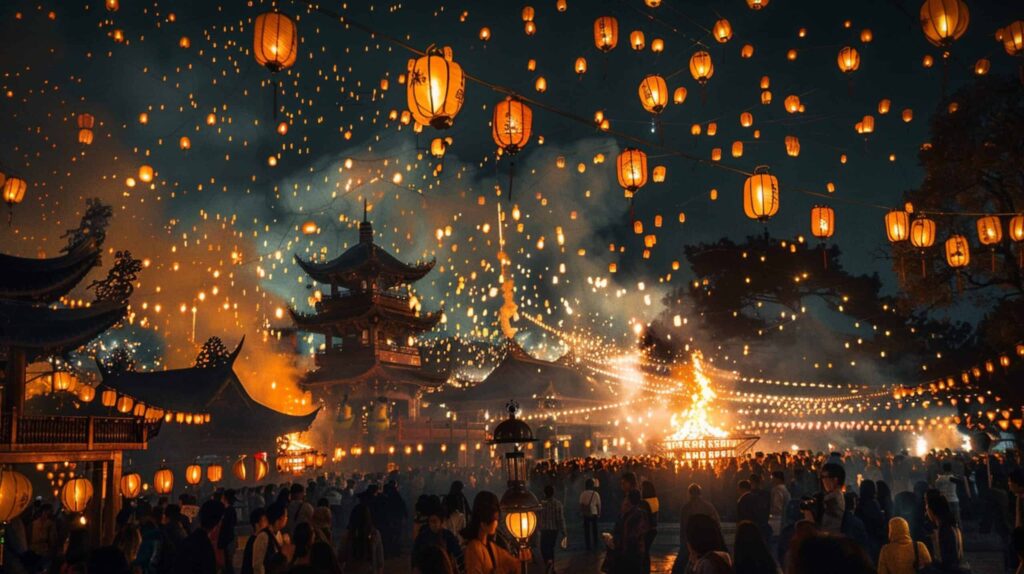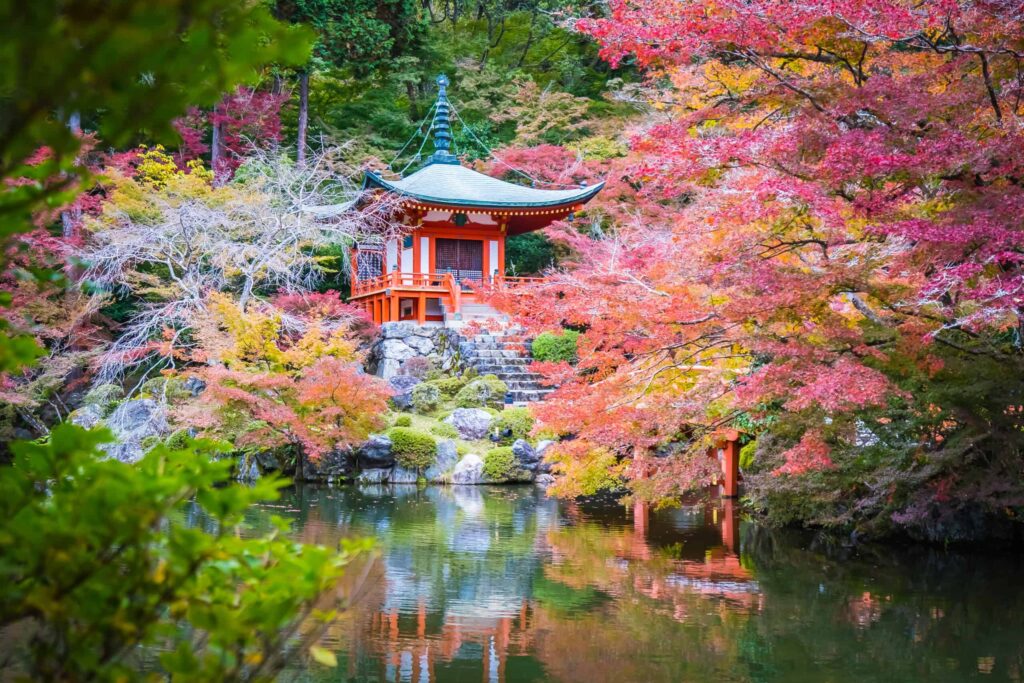Planning a trip to Japan? The best time to visit this captivating country depends on your preferences. Spring offers stunning cherry blossoms and pleasant weather, while autumn showcases vibrant foliage. Summer brings lively festivals and warm temperatures, but also high humidity and occasional typhoons. Winter boasts magical snowscapes and hot springs, perfect for a cozy retreat. Whether you prefer the bustle of city life or the tranquility of rural landscapes, Japan has something for everyone year-round.
Key Takeaways
- Plan your visit to Japan based on the climate guide and month-by-month travel insights to make the most of your trip.
- Consider the seasonal highlights and weather patterns when choosing the best time to visit, ensuring you experience Japan at its finest.
- Explore the festivals and events calendar to immerse yourself in the vibrant culture and traditions of Japan during your stay.
- Effectively plan your trip by utilizing the provided travel tips for a smooth and enjoyable journey.
- Take advantage of the information presented in the article to optimize your travel experience in Japan.
- By following these recommendations, you can enhance your visit to Japan and create lasting memories.
Discovering the Best Times to Visit
Ideal Seasons
Japan, with its diverse landscapes and climates, offers varied experiences throughout the year. Spring and autumn are considered the best times to visit due to mild weather and stunning natural beauty.
Significance of Spring
Spring, particularly from late March to early April, is famous for cherry blossoms (sakura) blooming across the country. Witnessing this phenomenon is a must for visitors seeking a quintessential Japanese experience.
Impact of National Holidays
Travelers should consider avoiding Japan during Golden Week, a series of four national holidays in late April and early May. During this time, popular destinations can be overcrowded with both locals and tourists.
Japan Climate Guide
Weather Overview
Japan’s climate varies significantly, offering a diverse experience for travelers throughout the year. Hanami season, known for cherry blossom viewing, typically occurs in late March to early April.
Spring (March – May)
Spring brings mild temperatures and the iconic cherry blossoms in full bloom. It’s an ideal time for hanami, as parks and gardens burst with vibrant colors, attracting locals and tourists alike.
Summer (June – August)
Summer in Japan can be hot and humid, especially in July and August. While it’s festival season with lively events like Gion Matsuri in Kyoto, visitors should prepare for occasional typhoons.
Autumn (September – November)
Autumn showcases stunning foliage across Japan. The weather is pleasant, making it another popular season for tourists. Regions like Hokkaido boast beautiful autumn colors.
Winter (December – February)
Winter brings snowfall to northern regions like Hokkaido and the Japanese Alps, perfect for winter sports enthusiasts. In contrast, southern areas like Okinawa enjoy milder temperatures.
Regional Variations
Japan’s climate varies from north to south due to its elongated geography. Hokkaido experiences cold winters, while Okinawa enjoys a subtropical climate with warm winters and hot summers.
Month-by-Month Travel Insights
March
March marks the beginning of domestic travel activity in Japan, as it signals the start of spring. This month is ideal for witnessing the iconic cherry blossoms blooming across the country. The domestic travel period in March offers a tranquil and picturesque experience with pleasant weather.
Early May
In early May, Japan experiences the Golden Week holiday, one of the busiest times for domestic tourism. Travelers flock to popular destinations during this period, making it advisable to book accommodations well in advance. The weather is mild, perfect for exploring outdoor attractions.
May
May is an excellent time to visit Japan as it falls right after Golden Week, ensuring fewer crowds compared to earlier in the month. This period offers a great balance between comfortable temperatures and lower tourist numbers. It’s an ideal time to explore both urban and rural areas.
Year-Round Highlights
Throughout the year, Japan’s diverse landscapes and cultural experiences cater to every traveler’s preferences. Each month presents unique opportunities for exploration, from winter illuminations in December to vibrant festivals in summer. Planning your trip around these events can enhance your overall experiences.
Middle of the Year
The middle months of the year, particularly June and July, bring rainy season to parts of Japan. While this may deter some travelers, it also offers a chance to witness lush greenery and enjoy indoor activities like visiting museums or relaxing in hot springs. Consider this aspect when planning your itinerary.
Seasonal Highlights and Weather
Cherry Blossoms
Cherry blossoms, or “sakura,” are a major attraction in Japan during April. The delicate pink blooms symbolize renewal and the transient nature of life. Tourists flock to witness this breathtaking phenomenon, known as “hanami.”
Autumn Leaves
In November, Japan transforms into a canvas of vibrant hues as autumn leaves blanket the landscapes. The reds, oranges, and yellows of the foliage create a picturesque scene that attracts visitors from around the globe.
Weather Conditions
Japan’s weather varies across its regions. The northern parts experience colder temperatures, with snow blanketing the landscape during winter. In contrast, spring brings warmer weather and the famous cherry blossom season.
Holiday Season
The holiday season in Japan is a magical time filled with festive lights, decorations, and traditional celebrations. Christmas may not be a national holiday, but it is widely celebrated with illuminations and seasonal events.
Ski Season
Winter in Japan heralds the start of the ski season. With world-class resorts like Niseko and Hakuba, enthusiasts flock to enjoy pristine powder snow and excellent facilities for skiing and snowboarding.
Rainy Season
The rainy season in Japan, known as “tsuyu” or “baiu,” typically occurs in June and July. While rainfall can be heavy, it also contributes to the lush greenery that blankets the country during summer.
Festivals and Events Calendar
Traditional Festivals
Japan’s festivals and events calendar is a vibrant tapestry of traditional celebrations deeply rooted in the country’s rich cultural heritage. Throughout the year, various festivals offer a glimpse into Japan’s history and traditions.
Cherry Blossom Festivals
One of the most iconic events in Japan is the Sakura Matsuri, or cherry blossom festival, which typically occurs in late March to early April. During this time, parks and streets across Japan burst into a sea of delicate pink blossoms, attracting both locals and tourists alike.
Obon Festival
The Obon Festival, held in mid-August, is a time when Japanese people honor their ancestors’ spirits. This event involves days of festivities, including traditional dances like Bon Odori and visits to ancestral graves to pay respects.
Golden Week
Golden Week, spanning from late April to early May, is a cluster of four national holidays that see the entire nation come alive with activity. This period marks one of the busiest times in Japan as people travel across the country for leisure or return to their hometowns.
New Year Celebrations
New Year’s Eve and New Year’s Day are significant occasions in Japan, marked by various customs and traditions. From visiting temples for Hatsumode to enjoying traditional foods like ozoni soup, national holidays around this time reflect a mix of ancient rituals and modern practices.
Winter Illuminations
During the winter season, cities like Tokyo and Osaka dazzle visitors with spectacular light displays known as winter illuminations. These enchanting displays transform urban landscapes into barren states filled with millions of twinkling lights, creating a magical atmosphere.
Planning Your Trip Effectively
Weather Considerations
When planning your trip to Japan, consider the weather conditions throughout the year. Japan experiences four distinct seasons: spring, summer, autumn, and winter. Each season offers unique experiences for travelers.
Spring, from March to May, is famous for its cherry blossoms (sakura). This period attracts many tourists due to the beautiful pink flowers blooming across the country. Summer, from June to August, can be hot and humid, making it ideal for outdoor activities like hiking and visiting beaches.
Autumn, from September to November, showcases stunning fall foliage, known as koyo. The vibrant red and orange leaves create picturesque landscapes across Japan. Winter, from December to February, is perfect for enjoying winter sports in regions like Hokkaido and Nagano.
Festival Insights
In addition to considering the weather, plan your trip around festivals that interest you. Japanese festivals are vibrant celebrations of culture and tradition. For example, the Gion Matsuri in Kyoto in July features stunning processions of floats adorned with red lanterns.
The Sapporo Snow Festival in February displays magnificent ice sculptures that attract visitors worldwide. By aligning your trip with these events, you can immerse yourself in Japan’s rich cultural tapestry.
Itinerary Optimization
To make the most of your visit to Japan, carefully craft your itinerary based on seasonal activities and festival schedules. Start by outlining key attractions you wish to visit and then work around festival dates that coincide with your interests.
Consider allocating more time for outdoor activities during favorable weather conditions. Plan visits to parks or gardens during spring for cherry blossom viewing or enjoy winter sports in mountainous regions during the colder months.
Travel Tips for a Smooth Journey
Cultural Etiquette
When visiting Japan, respecting cultural norms is crucial. Bowing is a common greeting gesture, with the depth of the bow indicating respect. It’s polite to say “Arigato” (thank you) and “Sumimasen” (excuse me) in various situations.
Packing Essentials
Pack according to the season when traveling to Japan. In winter, bring warm clothing as temperatures can drop significantly. During summer, light and breathable clothing are essential due to high humidity levels.
Efficient Travel
Utilize Japan’s efficient train system for seamless travel across the country. The JR Pass allows unlimited travel on JR trains for foreign visitors, providing cost-effective transportation options. Start your journey from major cities like Tokyo or Osaka for easy access to popular attractions.
Seasonal Considerations
The best time to visit Japan depends on your preferences. Cherry blossom season in spring (late March to early April) offers stunning views of pink blossoms. Autumn (September to November) showcases vibrant foliage colors, especially in places like Kyoto and Nikko.
Local Cuisine Exploration
Food lovers will delight in Japan’s diverse culinary scene. From sushi and ramen to tempura and kaiseki meals, there’s something for every palate. Don’t be afraid to try new dishes and explore local eateries off the beaten path.
Final Remarks
You now have a clear picture of the best times to visit Japan, with insights into the climate, seasonal highlights, festivals, and effective trip planning. By understanding these factors, you can tailor your visit to experience Japan at its finest and make the most of your journey. Remember to pack accordingly and immerse yourself in the vibrant culture and beauty that each season offers.
Plan your trip wisely, considering the weather conditions and events happening during your visit. Your adventure in Japan awaits, filled with unique experiences and unforgettable memories. Embrace the diversity of each season and explore this captivating country with confidence. Safe travels!
Frequently Asked Questions
What are the best months to visit Japan?
The best months to visit Japan are typically during spring (March to May) and autumn (September to November). These seasons offer pleasant weather, beautiful cherry blossoms in spring, and stunning foliage in autumn.
How can I effectively plan my trip to Japan?
To plan your trip effectively, consider factors like the weather, festivals/events, and your interests. Create a detailed itinerary, book accommodations in advance, research local customs, and learn basic Japanese phrases for a smoother travel experience.
What are some seasonal highlights in Japan?
Japan offers unique seasonal highlights such as cherry blossom viewing (hanami) in spring, colorful autumn foliage (koyo), snow festivals in winter, and vibrant summer fireworks displays. Each season provides distinct experiences for travelers to enjoy.
Are there any important festivals, national holidays, or events I should know about when visiting Japan?
Japan hosts numerous festivals and events throughout the year. Some notable ones include the Cherry Blossom Festival (Sakura Matsuri), Gion Matsuri in Kyoto, Sapporo Snow Festival, Tanabata Festival, and Obon Festival. Attending these events offers cultural insights and memorable experiences.
What are some travel tips for a smooth journey in Japan?
For a smooth journey in Japan, carry cash as many places may not accept cards, use public transportation efficiently with IC cards like Suica or Pasmo, respect local customs like bowing when greeting others, try local cuisine for an authentic experience, and be mindful of etiquette in temples/shrines.

